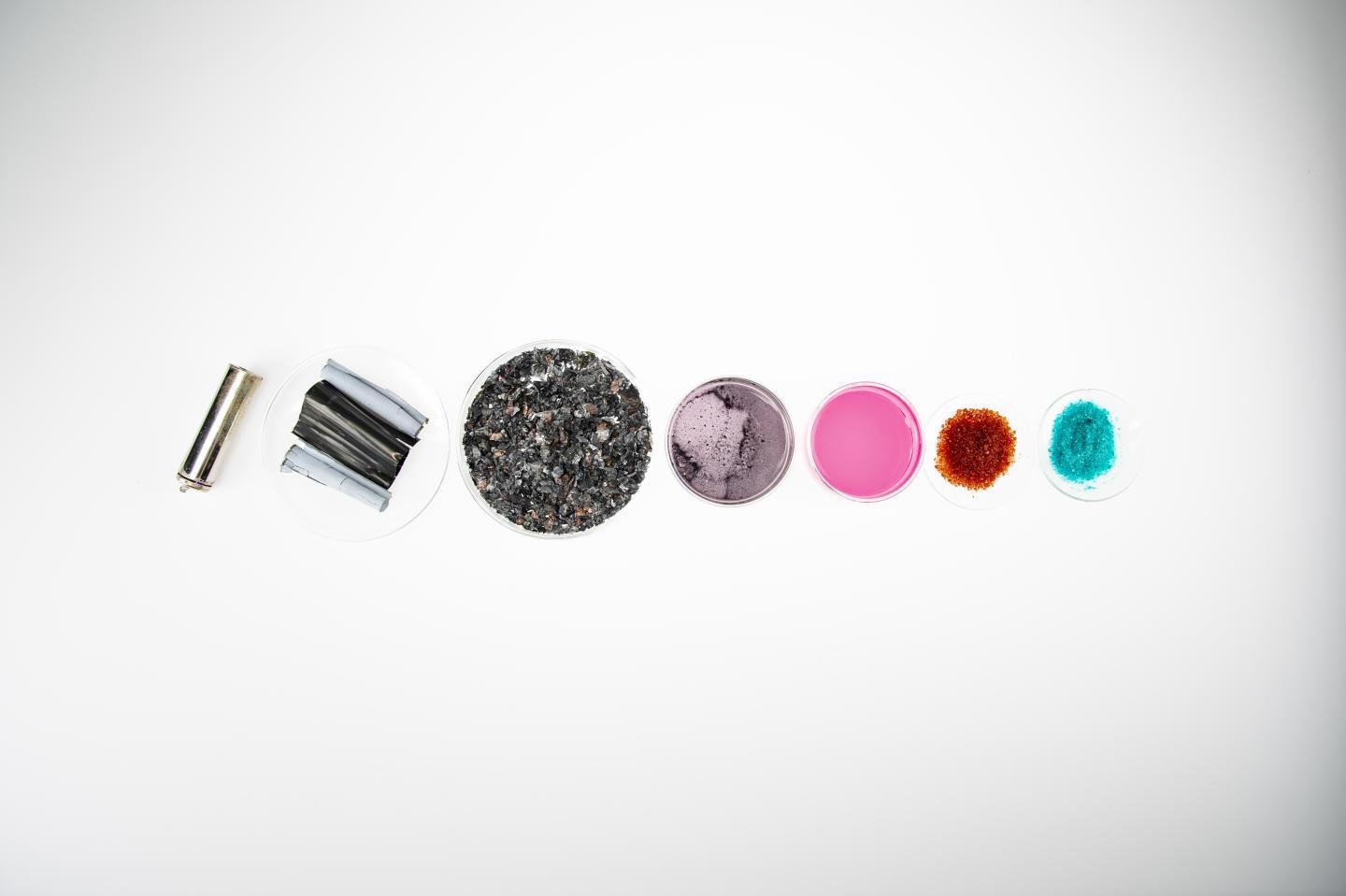Apr 1 2021
By 2030, 30 million electric cars will run throughout the European Union (EU), and the European Commission has been making hard targets for recycling these and other batteries.
 With new solution-based recycling processes, more raw materials can be recovered from batteries. In the picture, a red cobalt salt and a blue-green nickel salt have been obtained from a battery cell. Image Credit: Valeria Azovskaya/Aalto University.
With new solution-based recycling processes, more raw materials can be recovered from batteries. In the picture, a red cobalt salt and a blue-green nickel salt have been obtained from a battery cell. Image Credit: Valeria Azovskaya/Aalto University.
But the effects of battery recycling, particularly for the substantial lithium-ion batteries of the electric cars that will fill the streets soon, has been mostly unexplored.
As part of their latest study, Aalto University scientists have examined the environmental impacts of a hydrometallurgical recycling process for electric car batteries. They used simulation-based life-cycle analysis and took water and energy consumption, as well as process emissions, into account.
Battery recycling processes are still developing, so their environmental footprints haven't yet been studied in detail. To be beneficial, recycling must be proven to be more ecological than producing raw materials- we can't just assume recycling is automatically better, even though we know mining the raw materials has large environmental impacts, like high energy and water consumption.
Mari Lundström, Assistant Professor, Aalto University
In general, battery recycling involves the use of smelting, which essentially loses lithium and other raw materials.
Innovative hydrometallurgical processes, which involve isolating battery metals from waste through dissolution, facilitate the recovery of all metals but use huge amounts of chemicals and energy, and often generate contaminated wastewaters.
The results show that the carbon footprint of the raw material achieved by the recycling process that has been analyzed is 38% smaller compared to that of the virgin raw material.
The variance is much higher if aluminum and copper recovered at the time of mechanical pre-treatment are involved. Moreover, the findings point to problem areas.
Life-cycle analysis identifies the areas where recycling can be improved. For example, we noticed that using sodium hydroxide as a neutralizing chemical significantly increases the environmental load of our process.
Marja Rinne, Doctoral Student, Aalto University
According to the researchers, this type of analysis that has been hardly performed for battery recycling, can also be performed before applying new processes.
It is beneficial to find out how a few choices or process parameters impact the environmental effects of a process, so that it can be a useful decision-making tool for both policymakers and industry.
Simulation-based life-cycle analysis can be used even at the design stage of recycling processes to assess the environmental impacts and find the best possible options.
Mari Lundström, Assistant Professor, Aalto University
The prospective advantages of determining the most ideal recycling processes are significant; hence, the goal of the EU is to recycle 70% of the mass battery waste by 2030.
It has been fixing targets for particular metals utilized in batteries: 95% of copper, nickel, and cobalt, and 70% of lithium should be recycled by 2030. It has been predicted that the net worth of the global lithium battery recycling market will be 19 billion by 2030.
Lundström feels that now is right the time to devise alternative recycling techniques because the amount of battery waste will shoot up with the fast advancement of electric cars.
“We will have a massive need for recycling, and we have to find the most viable and ecological recycling processes. Research into technological innovations and their environmental impact go hand in hand,” stated Lundström.
As part of the research, the researchers also evaluated the industrial scalability of the process and proposed suggestions on how to best alter the process correspondingly.
Journal Reference:
Rinne, M., et al. (2021) Simulation-based life cycle assessment for hydrometallurgical recycling of mixed LIB and NiMH waste. Resources, Conservation and Recycling. doi.org/10.1016/j.resconrec.2021.105586.